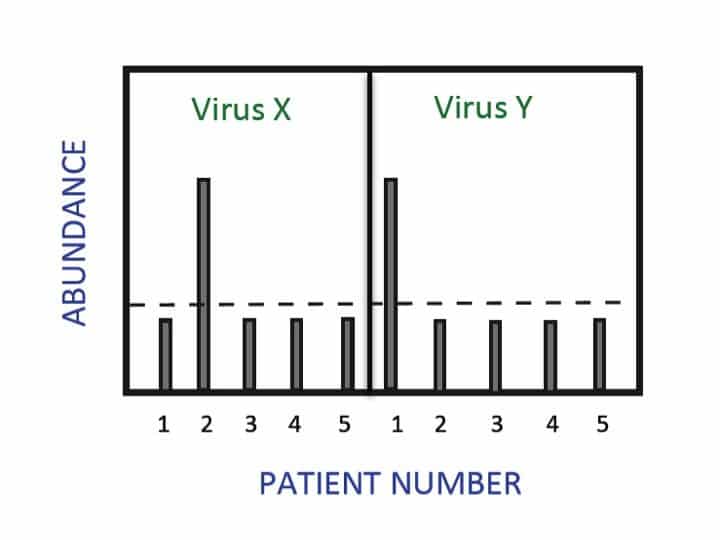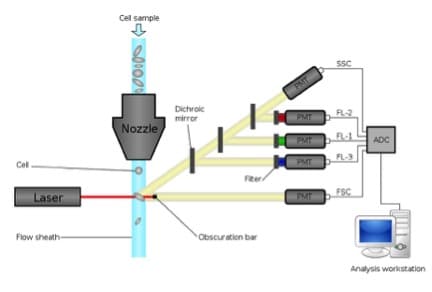Flow Cytometry Gone Viral: Introducing Flow Virometry
Do you want to know about a cool way to detect and tell the difference between virus particles? Then read on to discover flow virometry!
Join Us
Sign up for our feature-packed newsletter today to ensure you get the latest expert help and advice to level up your lab work.


Do you want to know about a cool way to detect and tell the difference between virus particles? Then read on to discover flow virometry!

We’ll show you how to make a DIY stock of chemically competent E. coli, the workhorse in the molecular biology laboratory.

Introduction Did you know that the idea of using genetic engineering to ameliorate certain human diseases was viewed as ‘science fiction’ only 10 short years ago? While cell mutagenesis studies and genetic knockout experiments were feasible before genetic engineering, they were not very reliable. Indeed, due to the random and imprecise nature of these older…

Probing Nucleic Acid-Protein Interactions with EMSA The electrophoretic mobility shift assay (EMSA) is a powerful technique for detecting specific-binding of nucleic acid-protein complexes. Over the past 30 years, EMSA has been the “go to assay” to investigate the qualitative interactions between nucleic acids (DNA or RNA) and nucleic-acid binding proteins. Through the use of radio-labeled…
The intriguing thing about protein expression is that the combination of transfer RNAs (tRNAs) that translate the 3 letter codon into an amino acid (aa) far exceeds the number of existing amino acids (aa). If you do the math correctly, the maximum number of unique combinations using the triplet code to code for the 4…
The amount of data requiring long-term storage is growing and accelerating. Current long-term digital storage technology cannot keep up. Imagine roughly 2.5 QUINTILLION bytes of data being created everyday in this world1–2 as more computers and network infrastructure come online. For average users, a long-term storage solution is probably not an issue. However, organizations and…

We all know that genes encode proteins that make up a living cell. However, the level and coordination of gene expression is really the key to the success of a living cell. One way eukaryotic cells (that’s us!) control protein expression is through addition of a methyl or hydroxymethyl group on the cytosine nucleotide. This…

There are many different methods and protocols on making your PCR run more efficiently. I recently came across an interesting PCR method called “nanoparticle” PCR. This method seems to attract a lot of attention, because it enhances a PCR by a few orders of magnitude. More interestingly, while the enhancement effect has been reported in a…

New ways to perform PCR emerge all the time. This speaks for the speed of technological advances, and reflects the ongoing need to keep up with fast-moving research. We all know that PCR’s main purpose is to amplify a stretch of nucleic acids based on sequence-specific primers. Nowadays, a wide range of PCR techniques exist,…

Grab an overview of CRISPR technology from its roots as a bacterial defense system to how it can be utilized in health and research.

If you ever worked in a biology or biochemistry laboratory, you probably already heard about ELISA. You may have even used it. But do you know what’s behind it? And how you can improve it? Let me guide you through the basics of ELISA, and introduce you to my favorite ELISA technique—AlphaLISA. First Things First… So,…

If you have sorted samples or phenotyped cells by surface expression of proteins, you’ve probably wondered how each cell is sorted or phenotyped in a flow cytometer? This question seems trivial, but in reality it took a while for engineers to figure it out. Before I get into today’s topic on “hydrodynamic focusing,” I’ll walk…

Multi-parameter data acquisition is key to the modern era of science research. I, for one, wish every single experiment that I design would give me the maximum amount of information. For example, in cell biology and immunology, we want to capture as much information (be it cytokines/hormones/chemokines) as possible about a given cell population. Of…
Phosphorylation Equals Cell Signaling! How do cells communicate and respond to their environmental cues? This question has been on the hot list for scientists ever since the discovery of the cell. Cells use signaling cascades based on biochemical reactions to deliver or receive messages. How cool is that? The major secret of cell signaling was…

Cloning, purifying, and expressing modified genetic material is routinely done in microbes such as Escherichia coli (E.coli). Relatives of this molecular biology workhorse normally live in the intestinal track of humans. The particular E. coli strain (K-12) that scientists use all over the world was isolated from the feces of a diphtheria patient in 1922.1…

Selecting fluorophores can be a tricky business, but we’ve got you covered in this handy how-to guide.

Are you planning to do cellular immunology research? Then chances are you will be introduced to the flow cytometer – “a modern immunologist’s best friend.” This modern magic box is a highly versatile machine packed with cutting-edge fluidics and photonics (lasers). Combined with the monoclonal antibodies conjugated to fluorochromes capable of emitting light signals from a…
Scientists today depend heavily on many molecular biology techniques to perform their research. For example, with the advent of next generation sequencing (NGS): scientists are able to look at very minute details, right down to individual genetic sequence variations. However, the increase in experimental complexity means that every extra step becomes more crucial than…
A disruptive sequencing technology Every new generation, a new concept is born and can completely reshape the landscape of biomedical research. Nanopore sequencing technology, although still at its infancy, is beginning to look like a “game-changer.” It’s a revolutionary concept in sequencing in which strands of nucleic acids are fed through a tiny pore (nanopore)…

Alu sequences are repetitive DNA sequences that are widely dispersed within the human genome. These “junk DNAs” are not as useless as one might think. An interesting method to use them is to quantify the number of integrated Human Immunodeficiency Virus (HIV) genome copies using Alu-PCR.

Have you ever wondered what a cell’s life is like? Do they constantly communicate to each other or do they just go on their own daily business? There is an easier way and it involves super advanced molecular “crayon” technology.

Digital PCR (dPCR) is a next generation qPCR that you might just need for quantitation and comparison of minute genetic copy differences.
In real life, cells are instructed to commit suicide for the greater good of the organism. The programmed cell death (apoptosis) is important during development of a multi-cellular organism. A good example you will appreciate is the dis-appreance of the tail from a tadpole as it turns into a frog. On the reverse, the lack…

The ability for DNA polymerase to copy a long stretch of DNA is becoming increasingly important. Why? It has to do with the advances in our sequencing technologies. Our next generation sequencing (NGS) technology requires the DNA polymerase to copy a long stretch of DNA (sometimes up to 50kb) as NGS is churning out genetic…

Before I get into today’s topic, please allow me to digress a bit and start with a few sentences that sum up the polymerase chain reaction (PCR); the grand-daddy of molecular biology. PCR, a method that is at the heart of modern day molecular biology discoveries, is a process that amplifies genetic material through our…

Recently, I have witnessed the uprising of various next generation sequencing (NGS) platforms and it’s quite interesting because each platform uses a different method. Previously, I’ve written about the exciting possibility of nanopore sequencing—a new sequencing technology based on the “signature” electrical currents generated as a single strand of DNA passes through the nanopore. The…

Anchored multiplex PCR (AMP) is a powerful method for amplifying minuscule amount of nucleic acids. Combined with Next Generation sequencing, AMP just might be what you need to identify genetic mutations.

The eBook with top tips from our Researcher community.